Recipe Books
The notation of culinary delights, surprises and remedies, represented in the handwritten recipe books of two Early Modern women, fifty years apart.
Recipe books can be viewed as individually curated collections of practices to produce foodstuffs or medicinal tonics. As well as passing down tried and tested recipes orally, preserving recipes as bound written records collated into volumes was becoming more prevalent during the 17th and 18th centuries, particularly amongst women from more privileged backgrounds where literacy and the materials to write existed.
Newcastle University Special Collections holds a selection of items relating to early recipe books. One of our finest examples is the Jane Loraine recipe book, (1684-1685) from the Miscellaneous Manuscripts Collection. The actual figure of Jane Loraine is subject to debate but may be the Loraine family of Kirkhale, Northumberland. This is a collation of 622 recipes taken from numerous contemporary recipe books and bound together, dictating everything from creating cures for the plague to baking the perfect loaf of bread. The recipe book also demonstrates family connections with notable Northumberland families, such as the Fenwicks and Chillinghams.
The Jane Loraine recipe book has been transcribed using (TEI) text encoding initiatives. This was initially achieved by its incorporation into the PGT module SEL8543: Manuscript, Print, Digital, focusing on the digital enrichment of transcripts using early modern materials. Students were asked to make editorial decisions about the digital presentation of the manuscript which were then incorporated into TEI, and has continued to be developed over subsequent years. The module highlighted the benefits of grass roots digital scholarship utilising transcription technologies. Additionally, this volume has played a central role in critically addressing female led communication devices in the seventeenth centuries and identifying the key role of women in medicinal developments.
Created fifty years later is the Jane Coulson’srecipe book of 1733 from the Blekinsopp Coulson archive. This bound volume details over 300 recipes which were intended for medicinal or culinary uses. These contain recipes for making orange water, pickled oysters and, the festive delicacy, mynced pies. Whilst some of the recipes are reflective of items still consumed today, they are representative of the time in which they were written with regards to obsolete language.
Below are examples of unusual words used in mynce pie recipe.
- Neat: archaic regional term for a bovine animal; an ox or bullock; a cow or heifer.
- Grossly: coarsely (Now obsolete).
- Sack: general name for a class of white wines formerly imported from Spain and the Canaries. (Now obsolete).
- Verjuice: The acid juice of green or unripe grapes, crab-apples, or other sour fruit, expressed and formed into a liquor; formerly much used in cooking.
Special Collections also holds a copy of Gervase Markham’s ‘The English Huswife’, in Rare Books. Originally printed in 1615, the copy in Special Collections holdings was created in 1649 and contains recipes similar in theme to both recipe books described above. Taken as a compendium of remedies, tips and methods for how to be a good housewife, it also features instructions on how to make festive delicacies, such as marzipan (marchpane).
This themed collection on edibles and consumption will be invaluable to researchers investigating social history of food consumption and the contexts in which it is displayed.

